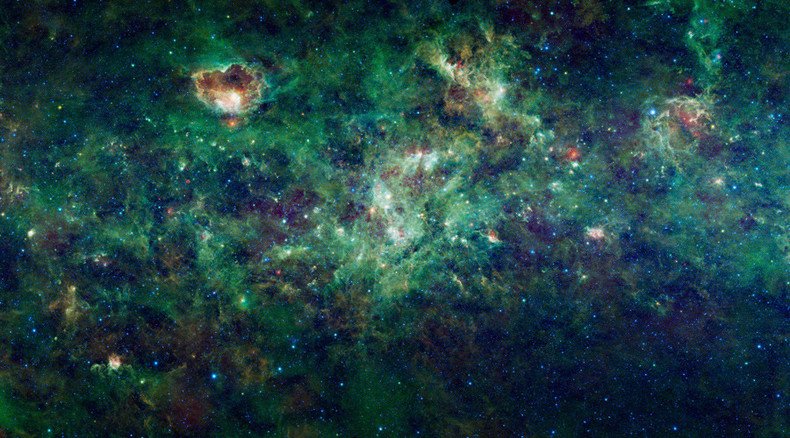'Alien civilizations' may be found on 'megastructures' near Milky Way star, scientists say

A crazy “swarm of megastructures” around a distant star in the Milky Way galaxy may be home to alien civilizations, according to scientists.
“We’d never seen anything like this star,” Tabetha Boyajian, a postdoctoral researcher at Yale University, told The Atlantic. “It was really weird. We thought it might be bad data or movement on the spacecraft, but everything checked out.”
KIC8462852: from a mysterious light pattern to an alien megastructure is a short step http://t.co/UzTQ0fd8Cspic.twitter.com/DsfCtI4dmm
— Massimo (@Rainmaker1973) October 14, 2015The star, known as KIC 8462852, is located approximately 1,500 light years from Earth. Discovered by NASA’s Kepler Space Telescope, the star has a strange and bizarre light profile, experiencing large changes and dips in brightness. Two major dips take place nearly every 750 days.
Such unusual light output could be an indicator of intelligent alien live, according to scientists.
In September, Boyajian published research titled 'Planet Hunters X. KIC 8462852 – Where’s the flux? [WTF, you say?],' in which she described the strange pattern of the star and the surrounding megastructures.
According to Boyajian’s observations, the “dipping activity” of the star can last “for between five and 80 days.”
Russian photographer captures our glorious galaxy with stunning snaps (PHOTOS) http://t.co/oeZcebvzXBpic.twitter.com/X80KrFFFoW
— RT (@RT_com) October 13, 2015Jason Wright – an astronomer from Pennsylvania State University who believes the “truth is out there” – said he is planning to publish an alternative report on the strange megastructures around the ‘alien’ star.
“When [Boyajian] showed me the data, I was fascinated by how crazy it looked,” Wright said. “Aliens should always be the very last hypothesis you consider, but this looked like something you would expect an alien civilization to build.”
READ MORE: Mystery radio waves from deep space captured LIVE, sender unknown
Wright and Boyajian have teamed up with Andrew Siemion, director of SETI Research Center at the University of California, Berkeley, to get a radio telescope to listen into the star. If they detect an artificial signal, they will request time on the Very Large Array (VLA) to determine whether radio signals are actually coming from an alien civilization.












